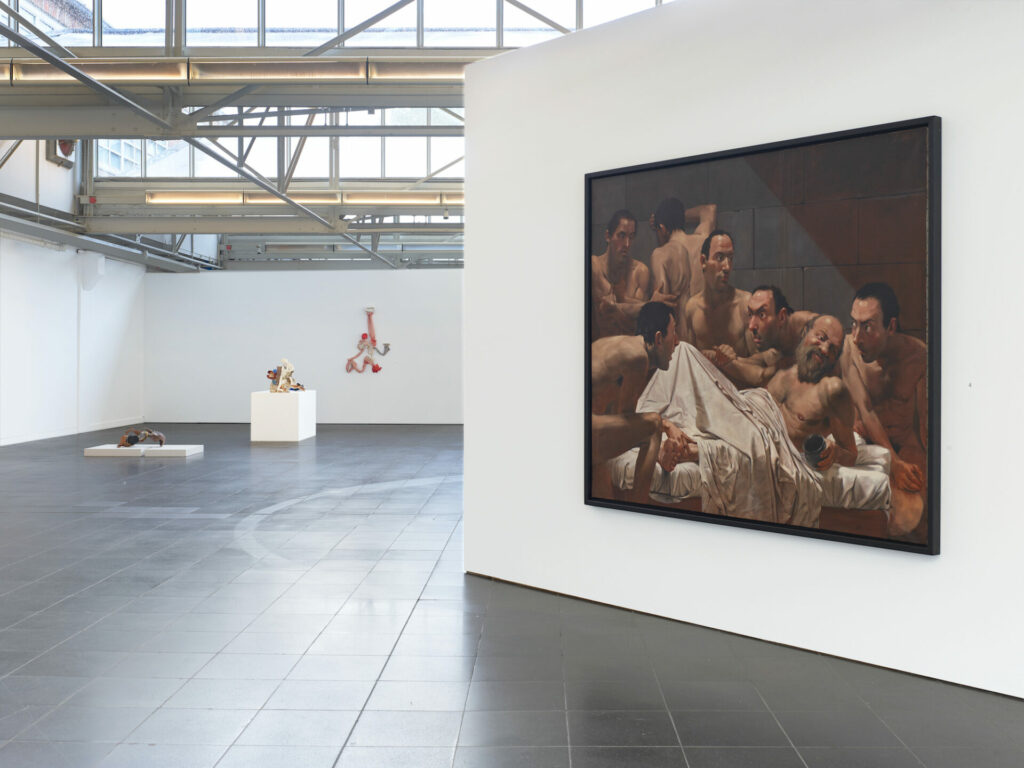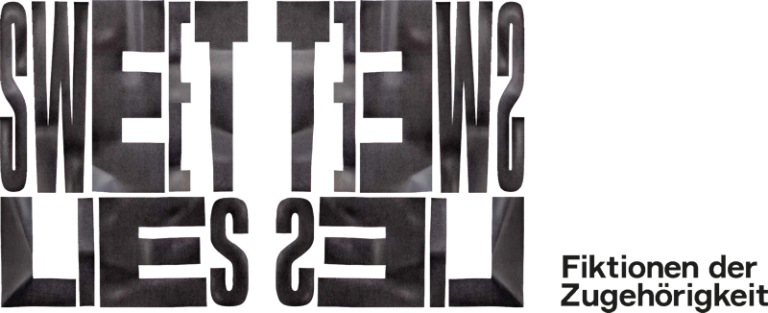Johannes Grützke
* 1937 in Berlin, Germany
† 2017 ibid

In 1973, together with artist friends, Johannes Grützke founded the Schule der Neuen Prächtigkeit, of which he became the main representative. It serves him as an instrument to counter the abstract painting that predominates in galleries and museums in those years. In his works, Grützke remained attached to the figurative. His pictorial themes, which are fed by reflections of religious, mythological, and historical content, are often realized in an ironic and grotesque manner. In his works, he is concerned with the relevance of historical material for the present – in a social as well as an individual context.
The scene depicted by Grützke is preceded by a trial of Socrates: In 399 B.C., the philosopher is accused of impiety and of corrupting the youth. His judges are 500 free citizens of Athens who vote on the truth of the accusations. The prosecution demands the death penalty. Socrates, on the other hand, suggests either treating him as an Olympic champion because of his merits or imposing only a small fine on him. Provoked by these demands, the judges decide in favor of the death penalty. The philosopher is taken to a prison, where friends and students try to help him escape. But Socrates rejects these proposals: Even in this situation, Socrates holds that to do wrong (that is, to escape punishment) is worse than to suffer wrong (that is, to have been unjustly condemned). This attitude contributes significantly to the philosopher’s posthumous fame to this day, because: Although he rejects the sentence passed against him, he does not evade it out of respect for the applicable law. The depiction of Socrates in this situation is considered a symbol of freedom of thought and against censorship, fanaticism, arbitrariness and intolerance.
Grützke’s painting starts exactly at this point. The artist shows the slumped Socrates surrounded by six men with identical faces. As the cup in his hand shows, Socrates has already emptied the hemlock potion that will kill him and is paying little attention to the angry hustle and bustle around him. It is irritating that Socrates’ friends, who were present at his death, all appear in Grützke’s painting as self-portraits of the painter. This makes it impossible to identify individual persons, which is entirely in Grützke’s sense: he clones himself, as it were, so that he can be understood as a pars pro toto for all people. But isn’t there a danger in inferring from oneself to others? For the personal Perspective is not always synonymous with the perspective of all other persons. This is precisely what Socrates drew attention to, for it is to him that we owe the realization that our knowledge is limited: that it is only through dialogue with others that we can arrive at new knowledge, articulate and retrieve our knowledge.
Socrates himself left no writings; his philosophy has been handed down only through the records of his students, first and foremost Plato. The fact that Plato’s writings are still available to us today is largely due to their reception by Islamic scholars during the European Middle Ages, during which Christians hardly engaged in the study of ancient writings. The importance of Socrates as one of the cornerstones of European intellectual history, which has been emphasized especially since the Renaissance, is thus due to the circulation of knowledge across different cultural circles.
